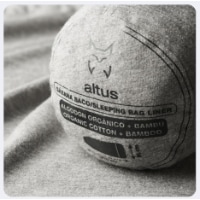Some really good answers here! As usual, I learn so much from others' experience.
While I agree with those who caution against anticipating problems, I found a few preventive measures can really make a difference in avoiding problems.
For me, the two biggest problems I experienced were:
1. Blister: I never had blister issues until deep into my second day of walking the del Norte. I developed a large blister on the back of my heal, about the size of my pinky finger. I applied Compeeds, but for three days each downhill step was painful, until I could finally drain it, then it healed and no more blisters. I had bought a tube of HikeGoo at REI, packed it and totally forgot about it (since I never got blisters, ha!), but started applying it on day 3 and never had another problem. I know there are whole threads about how to prevent blisters (larger shoes, yes! two pairs of socks, doesn't work for me, wide feet!, etc.), but this was my miracle worker and now I won't go on a long hike without it. One of my biggest fears on my Camino was that I would run out before I finished (yes, Vaseline might have worked, but once you've got something that works, that's what you want), but it lasted the whole 6 weeks.
2. Sore feet: Aging definitely impacts the fatty cushioning on the bottom of my feet! Even months after I finished my Camino, the soles of my feet still felt a little puffy under the skin. I think I didn't really rest much during each walk - on my training walks, I just keep walking and that's what I mostly did on my Camino, start walking and often not rest at all until reaching my destination. Once I started resting a couple of times during the day, taking off my shoes, resting feet on cool grass or in water (and then having to reapply my dwindling supply of HikeGoo!), it really helped my feet recover. Since returning home, I've started using Melt foot balls to massage my feet before and after walks - I'm thinking I will take these on my next Camino, they are very small, weigh almost nothing, and work to release the tightness in the feet and skin. Here's a video showing the technique - it takes 5-10 minutes, but it does help.
Some other things I found super helpful to prevent problems:
Electrolytes: I know there are whole threads on whether to use or not, but I personally found them to be highly effective at reducing fatigue and muscle soreness and cramps. My doctor had encouraged me to increase my magnesium, potassium, etc. on long walks and to aid recovery afterwards. I started each day by adding a packet (Re-Lyte) to a 500 ml bottle, sipping that for first few hours, then kept a handful of electrolyte caps (SaltStick), taking one about every hour or so, then two at the end of the walk. I did not experience any muscle fatigue or soreness over the 1000 km of walking. I shared with several Camino friends who were experiencing pain or cramping, they were surprised at how effective it was. Highly recommend.
Anti-inflammatories: At others mentioned, I was glad I had brought them with me, particularly after long Primitivo downhills when I could really feel it in my knees. I had both regular and PM with sleep aid - some days were so long or otherwise activating, that even though tired I wasn't sure I could sleep and was glad for a little boost. I didn't feel I needed to take them every day, but there were days that I felt I really needed to reduce swelling in joints.
Sleep: Don't underestimate the importance of a sound night's sleep. Sometimes a little sleep aid can really help, but experiment with what works best for you before you go, you don't want to feel too "hungover" in the morning.... I can't remember a day where, no matter how tired and sore I felt after walking, the next day after a good sleep, I was ready to go again - maybe my body felt tired and I needed a slow warmup, but miraculously it was ready (and eager!) to go
Trekking Poles: Really important on del Norte and Primitvo to help take pressure off knees, especially with a heavy pack. Even with the sticks, my knees were suffering some days (see anti-inflammatories above). I didn't use them all the time, it's nice to walk without sticks too, but I really felt I needed them on the downhill, also for balance the few times I had to walk on rocks over a stream




















